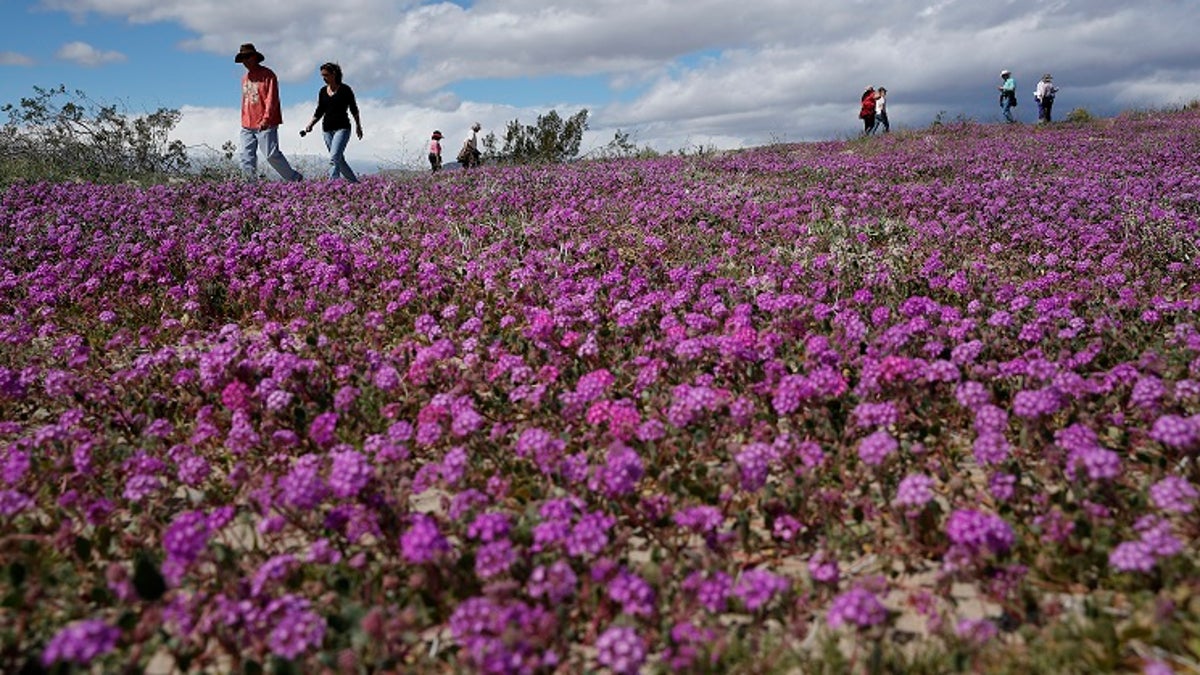
In this Wednesday, March 6, 2019, photo, people walk among wildflowers in bloom near Borrego Springs, Calif. Two years after steady rains sparked seeds dormant for decades under the desert floor to burst open and produce a spectacular display dubbed the "super bloom," another winter soaking this year is shaping up to be possibly even better. (AP Photo/Gregory Bull)
A sea of deep purples, warm oranges and bright yellows have taken over areas of California's Anza-Borrego desert in recent days, thanks to the so-called “super bloom” that has littered the area with vibrant wildflowers.
The bloom is the second in two years, an unusual occurrence as the event typically happens once a decade.
ALIEN SPECIES ARE 'PRIMARY CAUSE' FOR GLOBAL EXTINCTIONS, STUDY FINDS

In this Wednesday, March 6, 2019, photo, a woman sits in a field of wildflowers in bloom near Borrego Springs, Calif. (AP Photo/Gregory Bull)
But a massive amount of rain (which, Richard Minnich, a professor of earth sciences at the University of California, Riverside told KPBS is “150 percent more than normal"), followed by warm weather has apparently led to the perfect conditions for long-dormant seeds under the desert surface to burst into life.
In addition to rain, a super bloom also requires "years" of drought to "kill off invasive European grasses and weeds," according to KPBS. This helps the state's native flowers bloom.

In this Wednesday, March 6, 2019, photo, people walk among wildflowers in bloom near Borrego Springs, Calif. (AP Photo/Gregory Bull)
Hot pink Bigelow's Monkey Flower, purple Sand Verbena, delicate white and yellow Evening Primrose and desert lilies -- which opened up in December, signaling a super bloom was possible -- can be spotted, as can orange poppies, which blanket the sides of Southern California highways.
And the the bloom could intensify -- barring caterpillars and freezing temperatures.

In this Wednesday, March 6, 2019, photo, a group of men take pictures with their phones as they stand among wildflowers in bloom near Borrego Springs, Calif. (AP Photo/Gregory Bull)
GIANT HOGWEED, WILD PARSNIP AND OTHER DANGEROUS PLANTS TO AVOID
“It’s going to be better than it’s been in the last dozen or so years,” Mike McElhatton, educational program director of The Anza-Borrego Desert State Park Natural History Association, told AccuWeather.
California last experienced a super bloom in the spring of 2017.
The Associated Press contributed to this report.
